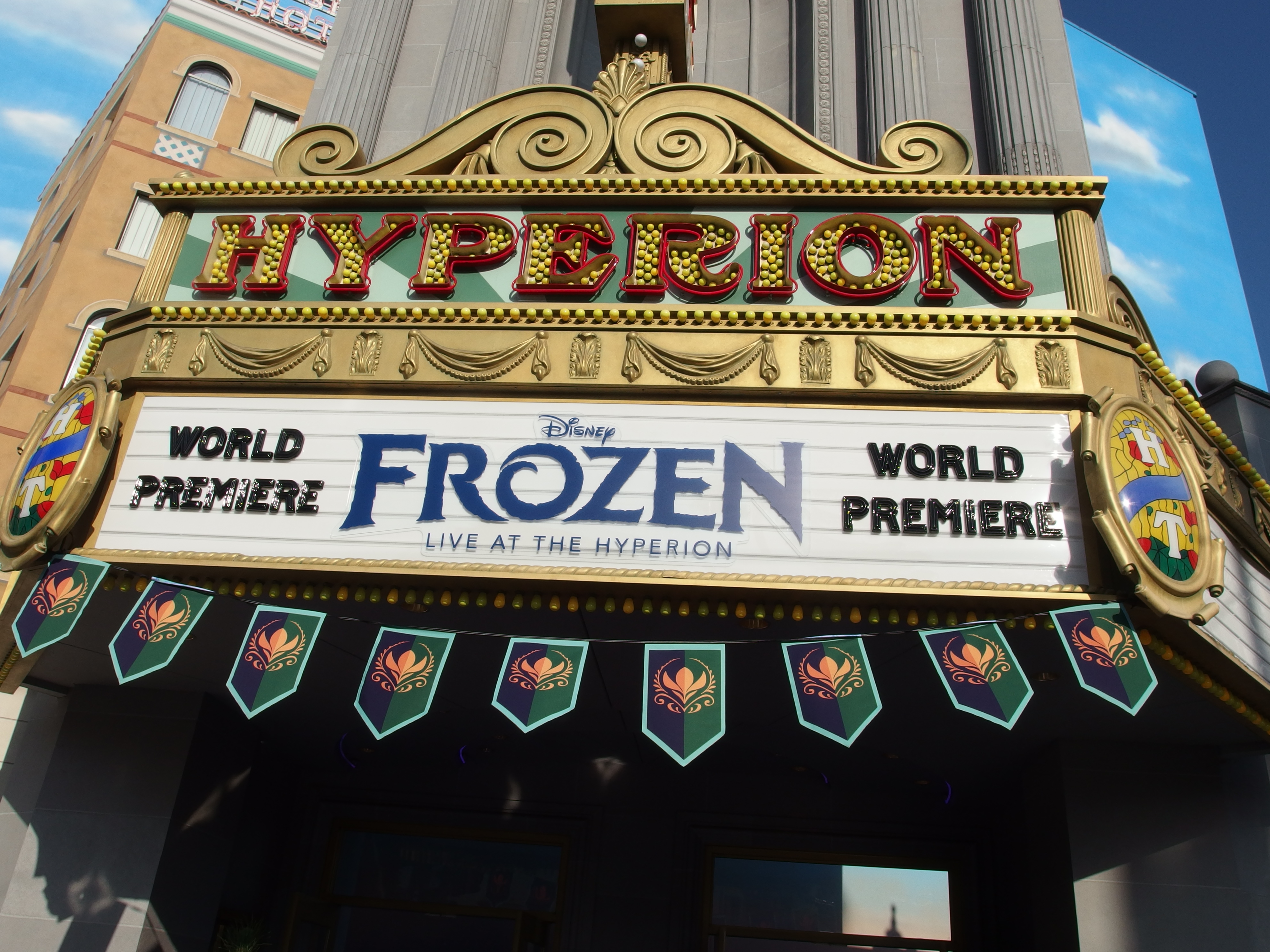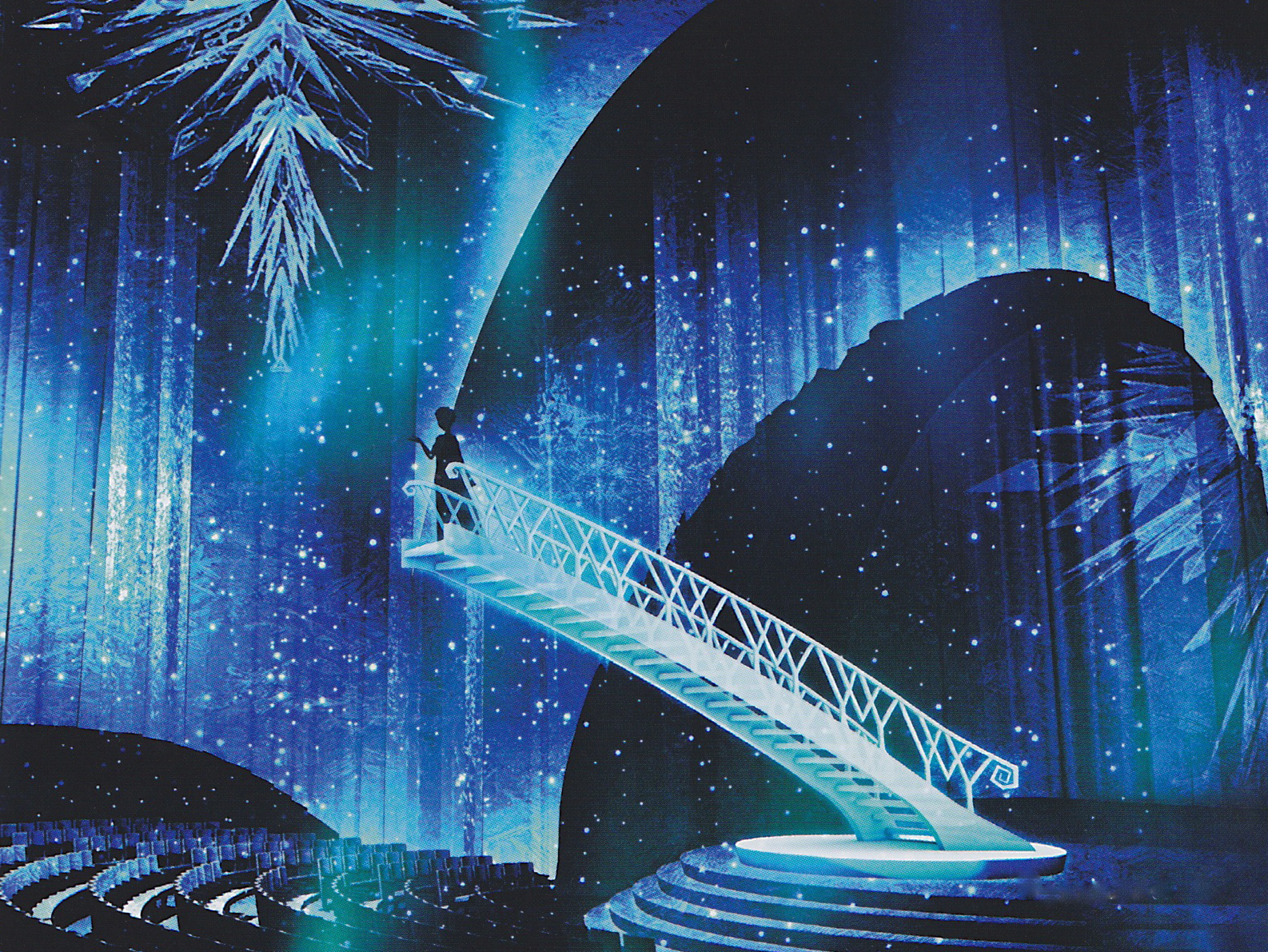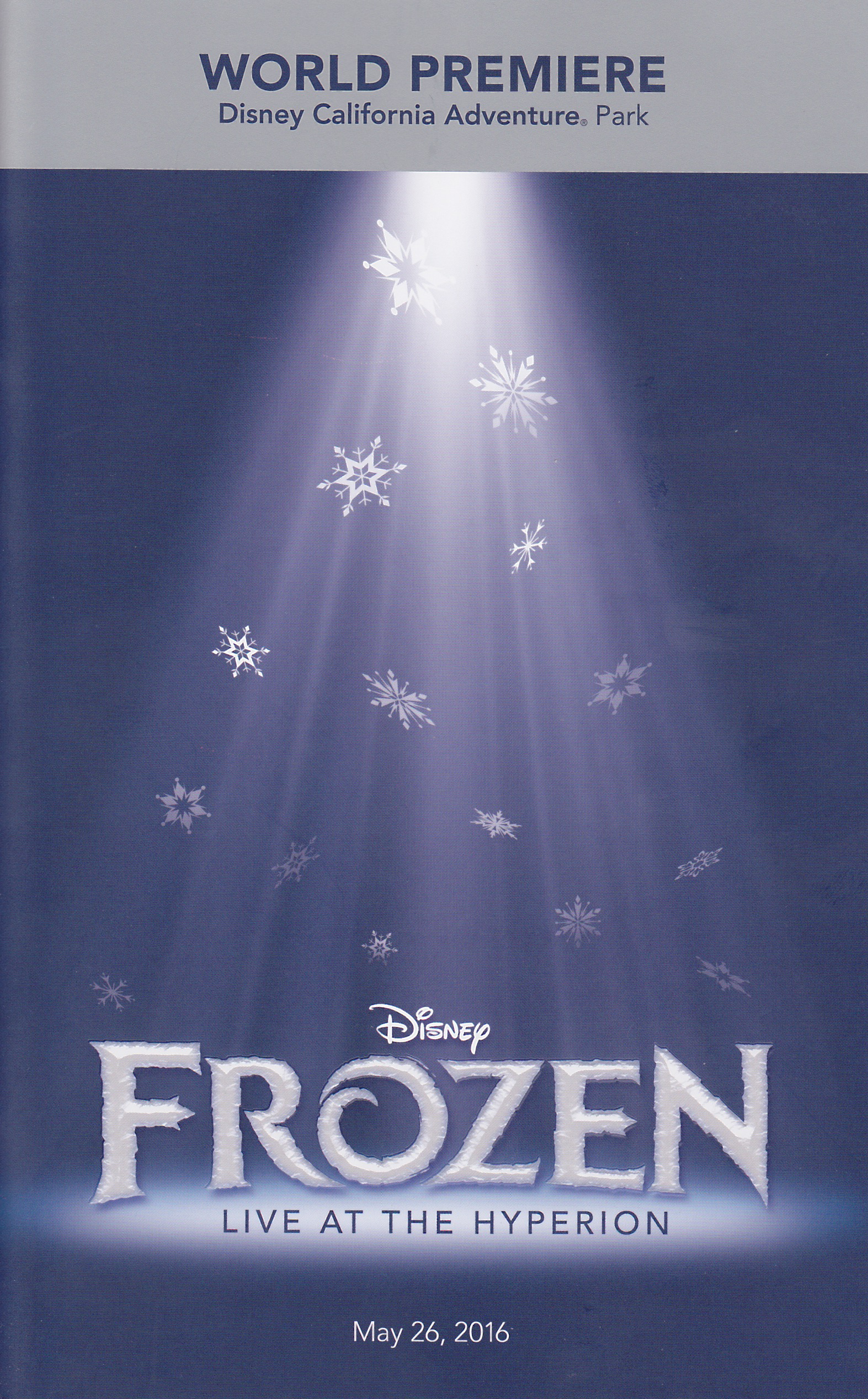Frozen — Live at the Hyperion Takes Disney California Adventure by Storm
Immediately following the World Premiere of Frozen — Live at the Hyperion, five of the key players in the creation of the new stage musical gathered on stage to discuss how it had been created, and what it meant to them. David Duffy served as Executive Producer for the production, in addition to his duties as Director, Creative Entertainment for the Disneyland Resort. He was joined by Dana Harrel, the Executive Creative Director; Liesl Tommy, the Director; Christopher Windome, Choreographer; and Jason Michael Webb, Musical Supervisor, Arranger and Adaptor.

Hyperion premiere by day…
Director Liesl spoke of how much Frozen meant to her, not just as a wildly successful film, but a meaningful story about the yearning to connect. Webb mentioned his love of the music of Disney, and how the music in Frozen illustrated the idea that challenges can make a beautiful journey. Choreographer Windome’s challenge as part of the creative team was inventing something the film did not have—large dance sequences that helped to move the story forward. He also spoke of creating various communities for Arendelle and showing the connections between them, as well as with the principal characters.
Harrel spent some time to explain the process that lead to the decision to add a different creative element to the finale of this production. In March of 2015 readings were being conducted with the actors, despite the fact that they were still waiting for their finale. The film does not end with a rousing song, something that the creative team felt was needed for the stage. Director Tommy and Music Supervisor Webb announced that they wanted to make "Love is an Open Door" their finale. Harrel was doubtful, as the song in the film belongs to Hans, the villain of the piece. But in a new context, the lyric took on a new meaning. And by adding the parents to this the song was given even deeper meaning.

Production sketches for set designs
Among the practical considerations discussed was the casting process. Tommy said that selecting performers for the Hyperion production, with three performances a day, seven days a week, was like casting for Broadway, national tour, and all regional productions at the same time. Eventually, 107 performers were brought in as performers in Frozen — Live at the Hyperion. Tommy noted, “I can bring this cast to Broadway.” She also lauded the design team, who were not represented in the group. The decision to use projections as a major element in the sets is well complemented by carefully chosen set pieces, especially the seven over-sized doors, all faithfully adapted from designs seen on screen.
Duffy wound up the discussion by asking each member of the team to share a favorite moment in bringing Frozen to the stage. He offered his own—seeing the show in front of the opening night audience. For Harrel it is a moment in the show in which Anna and Hans are seated on the apron of the stage. As Hans assures Anna he would never shut her out of his life, the dancers on stage behind them gesture in the choreography to visually illustrate what is being said. Windome spoke of the end of the coronation waltz. The dancers were instructed that, as they stopped in place, to look at their partner and see something new. Webb stated that his favorite moment was the appearance of the parents at the end, slowly singing the first verse of the finale, bringing new meaning to the lyric.

Cover of the souvenir program that was given out opening night
Director Tommy said she loved every moment. It was, she admitted, the decision to bring the parents and their story back into the finale that was her favorite. It made the loss of them more meaningful and brought closure to their story. She concluded that the method of bringing this about was the essence of the theater process.
In her program notes, Dana Harrel says, “A great deal of love and thought has gone into every single moment of Frozen—Live at the Hyperion. If you shed a few tears, chuckle at a line of dialogue and fall in love with these characters all over again, then we’ve done our job.” To those words on opening night were added a wish: “Hopefully, Frozen will keep this theater filled for the next 14 years.”
[gallery td_select_gallery_slide="slide" ids="148855,148857,148859,148860,148861,148862,148863,148864,148865,148866,148867,148870,148871,148872,148873,148874"]

